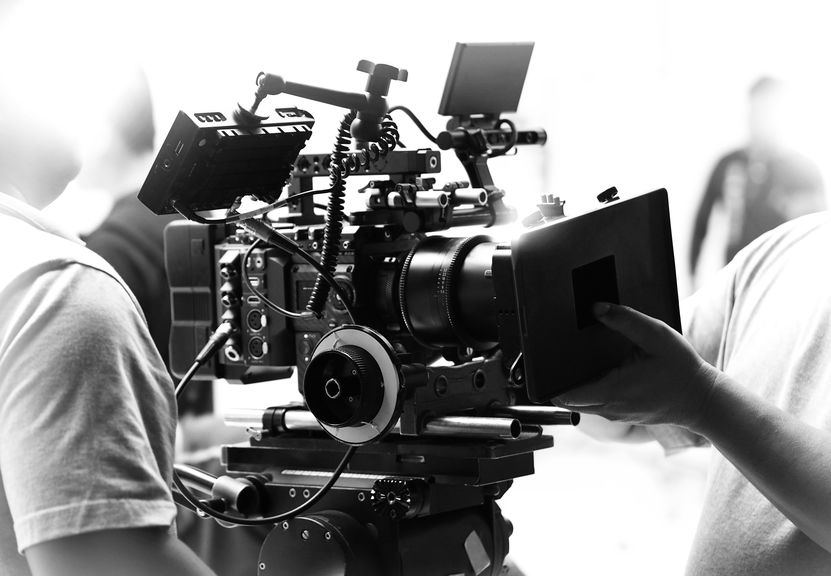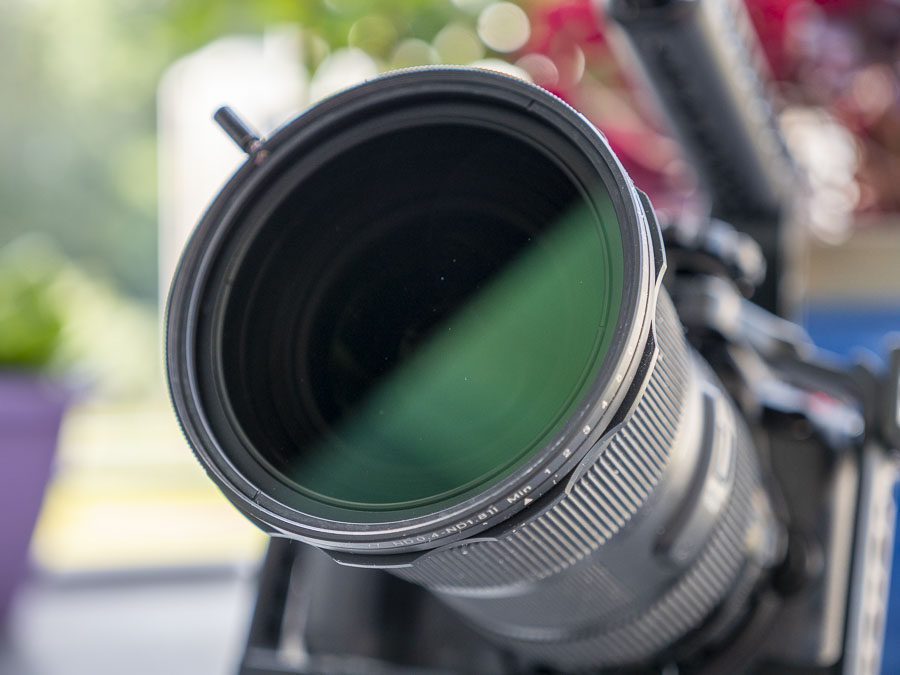I’m sure I’m not the only one out there, but this week I found myself asking, what lens filters do I need for video to get a cinematic look? In other words, what types of lens filters are essential for video when you’re shooting DSLR or bigger cinema cameras?
Well, I did some research and here’s what I found:
The five most important lens filters every videographer and cinematographer should own and know how to use are:
- ND-filters – or Neutral Density filters – because they prevent overexposure and makes it possible to maintain a shallow depth-of-field and a large aperture even in bright environments
- Polarizers, which are used to enhance the colors and saturation of your shots in real time, without having to wait to get to post to begin correcting your colors
- Color filters, which provide specific atmospheric effects by enhancing specific colors
- Diffusion filters, which can soften features and give your film a classic Hollywood style-glow
- UV filters, which don’t directly influence the look of your film, but can help protect your lenses from ultraviolet light, as well as from the elements, such as sand, dirt, and general wear and tear like scratches, water damage, or cracks from falling.
The above summary is just scratching the surface. There are also things to consider like, how do I mount my lens filter, when should I use each filter, and more.
Let’s dive into this in more detail below.
Here’s What A Lens Filter Is

Lens filters are pieces of glass, most commonly round or rectangular in shape, that provide a specific effect to your image – usually to impact the level of exposure of your shot.
Exposure, as you know, is the amount of light that hits your camera’s sensor through your lens. Filters don’t just reduce the amount of light that comes through your lens, but changes that light in some unique way.
For example, you are able to use color filters to change the color of the light that’s received by the sensor so that the hue becomes all red, or all purple, or all a sepia-style yellow.
How To Attach A Lens Filter – Matte Boxes Vs Circular Screw-On Filters
Lens filters for film and video cameras usually go before the front of the lens, using what is known as a matte box.
Matte boxes help block out light sources to prevent unwanted flares on your lens, while doubling up as a housing for your filters, and make replacing, rotating, or adjusting filters easy.

This rectangular lens-forward facing type of filters is the most convenient to add or remove, as other filters, like the ones that go between the lens and the lens mount require you to physically remove the lens to swap them out.
There are different sizes of lens filters, usually to correspond with different sized matte boxes for different sized cameras. The typical industry standard size is 4 x 5.65’’, but make sure you research what size box to use depending on what camera you are using.
There are some other alternatives to mounting a lens filter without a matte box.
There are screw-on filters, which you can screw directly onto the front thread of your lens, as well as step-up rings, which are metal rings that allow you to mount filters with wider-diameter threads to the front of your lens.
You might choose to use a screw-on filter instead of a matte box for economic reasons – both financial and size economy. Screw-on filters are smaller and easier to carry around. You can even leave a filter screwed-onto a specific lens.
However, these can be inconvenient when shooting with many different filters, and the need to have separate step-up adapters for lens and filters of different sizes requires purchasing more gear.
There is a middle-ground between screw on lenses and matte boxes when shooting on a DSLR. By using a filter holder that you connect to the front of your camera lens, you can easily slip 4×4 inch filters in and out of the filter holder without screwing anything on or needing a bulky matte box.
Keep in mind, filter holders are slightly more fragile as the filter glass isn’t as securely contained in a box or connected to the lens itself.
Why You Should Use a Lens Filter

There are as many different reasons to need a filter as there are different types of filters with different effects. Different scenarios require different filters.
So how do you know when to use a specific filter? Well, here’s a basic breakdown to help give you a quick overview of the possibilities.
The goal of any lens filter is to control and change the light that hits your camera lens.
A few common scenarios:
Let’s say you want to reduce the amount of glare that’s reflecting off a nearby surface in the foreground or background of your shot. You can use a polarizer filter to reduce the reflections and see-through windows to catch a subject inside a building looking out.

Or you could want to enhance a specific color that’s important to your film’s overall color palette because it says something about the character’s state of mind, or is of thematic importance, in which case you would use a color filter that matches the color you are looking for.
Or most common of all, you might just want to minimize the overall amount of light that’s entering your lens, which is where you can use an ND-filter to block the light and darken your image without losing any of your colors.
It could also be a creative choice to achieve a specific visual style like if you’re trying to create an overall washed out, hazy look or change the contrast to bring out a more vibrant hue of a specific color in a scene like you might use a diffusion filter for.
Lens filters can do all of this, as well as help to protect your lenses from the elements, like if you are filming in a windy location that’s kicking up dirt into your expensive rental lenses.
No matter the individual situation, the overall benefit of knowing and using lens filters is having your bases covered when battling the elements, unruly lighting situations, and unintended overexposure.
The best part about when to use a filter is that you can use them at your discretion. Because they are removable, you can choose when and where to apply a specific effect, assert more control over the current lighting conditions, and see the results on set instead of waiting to “fix it in post” before you can see it in action.
If you aren’t sure if you need to use a lens filter for a specific shot or scene, you can use this shorthand trick to determine if a lens filter might be needed.
Ask yourself:
“In what way does my scene or setting require me to control the light coming into my camera that my camera and G&E can’t?”
By answering this, you can discover blind spots in your equipment where a lens filter might be necessary. Plus, the better you know your camera and the different lens filters available, the easier it is to know when each type of filter at your disposal.
Let’s dive into the types of lens filters that are out there.
The Top Lens Filters Used by Cinematographers
These are the main types of lens filters you will encounter, starting with the two most important types to invest in for your own video productions:
ND Lens Filters

ND Lens Filters, or neutral density filters, darken your image by shielding the amount of light that gets through to your camera’s sensor, keeping your footage from becoming overexposed. You can think of an ND-filter as sunglasses for your lens.
Because of the way ND filters block light, the colors aren’t supposed to be negatively impacted, which makes ND filters one of the most versatile and important filters for an aspiring cinematographer to have on hand.
However, the quality of the filter makes a difference, and a lower quality ND filter could negatively impact your colors, so be mindful of this when picking your own to buy.
ND filters are great for shooting daytime exteriors when you are trying to curb the amount of sunlight that gets through on your image, and for capturing deep or short depth-of-field shots.
ND filters come in kits, and stack over each other nicely to cut light incrementally in measurements of stops.
There are a few different variations of specialty ND filters, like graduated ND filters, which helps cut the light across a gradient to reduce the dynamic range between the brightest part of your frame and the darkest part of your frame.
You might want to use a graduated ND filter – or GND filter – during a scene where your characters are covered in shadow in the foreground, while the sun is overexposing and washing out the image from the background. By using a GND filter, the sun at the top of your frame can be darkened without totally losing your characters in the lower half of the frame.
There are also infrared ND filters that cut down on the infrared light your digital camera’s sensors pick up.
You may use an infrared ND filter with a high-quality digital camera, where the sensors pick up more infrared light which can create unnatural-looking images.
There are also variable ND-filters that allows you to adjust the light manually by rotating it.

You can use a variable ND filter to control how much light you stop by rotating it. That way you won’t have to change the filter every time you want a different exposure.
Variable ND filters are great for video and run-and-gun situations where you need to change your exposure fast.
If you’re interested in learning more about variable ND filter, we recommend you read our in-depth guide to variable ND filters where you’ll also find some great recommendations.
With any ND filter, you buy, pay attention to the quality of the lens.
Better ND filters tend to be more expensive and are better at preventing problems lower quality filters run into like unwanted lens flares or color cast, distortions or vignetting because of things like multi-coating, which make the filter better but requires more work (and more money) to create.
UV Lens Filters
UV Lens Filters, or ultra-violet filters, cut excessive UV light, protecting your camera lens and camera’s sensor from damage that could impact your image.
Because most modern cameras don’t technically require UV filters, they are often used more to guard against any outside damage like scratches, fall damage, water damage, etc.
They’re also good for keeping any sand and dirt that gets kicked up while shooting from touching your lens directly.
Be mindful when using a UV filter, as they have been known to create unwanted lens flares, and occasionally pick up and reflect light. If you find a flare you just can’t get rid of, always check your UV filter.
Polarized Lens Filters

Polarized Lens Filters, commonly referred to as polarizers, saturate your image to make colors pop more, while also reducing reflections and glare like a UV filter without making the whole image darker like an ND filter. They cut the light you don’t want, but leave the light you do.
Polarized filters are great for shooting exteriors, as well as some interiors. They are good for capturing deeper details when shooting against the sky, as well as good for shooting through windows to reduce glare and actually see a subject sitting inside looking out.
Pretty importantly, polarizers make the difference when shooting against a water surface. Because of water’s reflective nature, it can sometimes be hard to shoot something happening underneath. Polarizers can reduce the reflection so your image picks up what’s happening below the surface.
Plus, reflections and glare can negate the contrast and color in a shot, which can create a washed-out look that the polarizer helps to prevent.
Polarizer filters can also be rotated with a wheel, like variable ND filters, so you can adjust the saturation of your image accordingly.
Colored Lens Filters
Colored Lens Filters are colored filters used to manipulate your lens, either by enhancing, correcting, warming or cooling the colors in your shot.
Certain colored filters are best used to reinforce the story elements of your videos.
For example, you might use a cooling filter to give a weighty scene a more sad, dark feeling by drawing out the blues. Or, you could use a warming color to make an interior room feel more inviting.
With the rise of affordable (or free) color-correction software like Davinci Resolve, it can be tempting to do all of your color edits in post. However, cinematographers have used filters to control color for decades.
Because you can see what your image looks like right there in your monitor, color filters are a useful tool for making subtle and realistic improvements to your imagery in real-time.
Diffusion Lens Filters
Diffusion Lens Filters are used to blur or soften an image, creating a subtle glow in some cases or a dream-like feeling in others. Because digital cameras are very sharp, you might be tempted to use these filters to take the edge off your shots and get more digital-looking shots looking more organic.
One reason you might use a diffusion lens filter is to soften the features of an actor’s face.
If you take Roger Deakins’ word for it, he hasn’t used diffusion on a camera in three decades and suggests to instead try to use your lighting to soften your shot rather than rely solely on a diffusion filter.
“I used to carry something like 35 filters, which included all sorts of fog filters and nets as well as graduated filters in various colors, which used more often when I was shooting on film. I also carried black stockings of various densities but that was a long time ago. I always shoot with Arri cameras so I never used a filter behind the lens.”
– Roger’s Website
How Lens Filters Help Create a Cinematic Look
Whether it’s ND filters for the perfect exposure level, UV filters for lens protection, or polarizers and color filters to enhance your creative choices, as a cinematographer, you’re going to want all of the above on hand at all times.
Using filters is a great way to take more control over the images you are shooting directly on set. Instead of leaving it all up to the color edit, you can commit to specific choices and create more cinematic-looking shots directly from your camera.
Making a creative commitment to a specific look and feel can feel scary, especially if you are nervous that it will play. But it’s actually incredibly beneficial, both to your creative growth and to your story to commit to a style choice before you ever take it to the editing room.
Imagine this is the only chance you get to create the image you want. There’s no Davinci, no After Effects. Just you and a camera. Making the conscious choice to get the shot you want right there on set, and see the movie before you are the truest form of cinematography there is.
Plus, controlling your exposure with ND filters prevents you from needing to change the aperture, base ISO, or shutter speed of your camera, so you can keep your settings as optimal as possible.
In a way, learning to use filters well is like leveling up your cinematography. By testing different warming, cooling, and color-specific filters, you can make subtle changes to your images to impact your storytelling. You can even use diffusion filters to give an old-Hollywood cinema stylistic touch to your work.
All in all, having your own filter kit on set of any production will give you more creative liberties and control, and even if you choose not to use them, as the great Roger Deakins, having the option makes all the difference.

